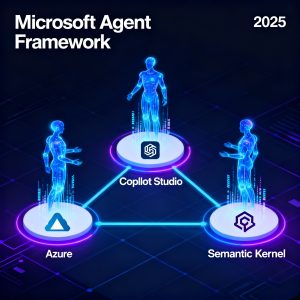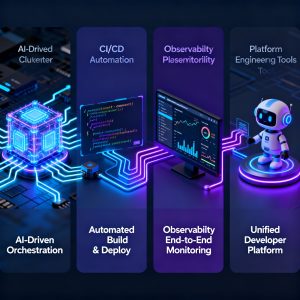Software quality assurance (QA) has evolved more in the last few years than in the previous decade. Today’s development landscape requires speed, precision, and collaboration at scales that traditional QA methods—manual testing and shared staging environments—struggle to sustain.
In 2025, one innovation stands out as a catalyst for this change: preview environments. These ephemeral, on‑demand, production‑like environments are spun up automatically to test every code change in isolation, reshaping how modern teams build, test, and release software.
The New Standard for Modern QA
The modern software lifecycle prioritizes rapid iteration without compromising quality. Organizations are now adopting preview environments not as an experiment, but as a standard practice for high‑velocity teams.
Preview environments provide:
- Faster testing cycles through automated deployment of isolated environments.
- Improved reliability by catching defects earlier through end‑to‑end validation.
- Enhanced teamwork between developers, testers, and product managers via real‑time access to live feature builds.
Teams adopting these environments report fewer production issues, smoother sprints, and far better collaboration between engineering and QA groups.
Why QA Testing Is Changing
The pace of software development in 2025 demands tools that combine automation, scalability, and reliability. Preview environments answer that call by merging DevOps efficiency with QA assurance.
These environments serve as temporary, fully functional replicas of production systems, enabling testers to run performance, security, and integration tests with confidence that results mirror real‑world conditions.
Key Benefits: Why Preview Environments Matter for QA
Traditional quality assurance often faces recurring frustrations:
- Shared staging environments regularly break when multiple teams commit changes simultaneously.
- QA teams lose valuable time waiting for testing slots.
- Bugs caught late delay releases, leading to mounting technical debt.
Preview environments eliminate these obstacles entirely. Every pull request or feature branch can automatically generate a dedicated, isolated test environment, complete with up‑to‑date dependencies and configurations.
Advantages at a glance:
- Isolation: Each branch runs in its own container, avoiding conflicts.
- Realism: Mirrors production for accurate performance insights.
- Speed: Instant deployment reduces waiting times for QA.
- Collaboration: Live preview links make it easy for non‑developers to review features.
This approach empowers QA engineers to test continuously rather than sequentially, reducing last‑minute bugs and release anxiety.
Integrating Preview Environments into DevOps
Preview environments dovetail perfectly with CI/CD pipelines. Anytime a developer opens a pull request, an automated process creates and configures a complete testing environment. Once merged or closed, it can be destroyed instantly—keeping infrastructure lean and costs predictable.
Core integrations include:
- Automated creation triggered by Git branches or pull requests.
- Integration with CI/CD platforms like GitHub Actions, GitLab CI, and Jenkins.
- Built‑in test automation that runs unit, integration, and system tests in parallel.
This automation removes the operational burden of maintaining testing infrastructure manually. Instead of wasting hours configuring staging servers, QA teams can focus entirely on validating functionality and performance.
Comprehensive Testing Methodologies in a Preview Environment
Preview environments support all major testing methods within isolated, production‑like systems:
- Unit Testing: Verifies logic in isolated software components.
- Integration Testing: Checks if APIs and services interact seamlessly.
- System Testing: Ensures complete application stability across services.
- Performance Testing: Simulates heavy traffic to measure response times.
- Security Testing: Detects vulnerabilities under real infrastructure conditions.
- User Acceptance Testing (UAT): Validates that software meets business and design goals.
Automation complements these stages with continuous feedback loops, allowing QA teams to catch regressions instantly as code changes flow through pipelines.
Streamlining End‑to‑End Testing for Microservices
Microservice and microfrontend architectures dominate modern systems—but they also make integration testing more complex. Shared staging environments often fail to reproduce interactions across distributed systems.
Preview environments solve this by providing ephemeral, end‑to‑end testing spaces. Each service or branch operates independently while still communicating with realistic, containerized microservice dependencies.
This innovation allows QA to detect integration issues early, before they cascade through production releases.
| Feature | Shared Staging | Preview Environments |
|---|---|---|
| Isolation of branches | Low | High |
| Parallel QA runs | Limited | Unlimited |
| Risk of integration conflicts | High | Low |
| Feedback cycle | Slow | Instant |
| Environment cost | High | Scalable, pay‑as‑you‑go |
| Developer experience | Frustrating | Empowering |
Solving the “Staging Crunch”
Every product team knows the staging struggle—multiple builds waiting for QA approval, endless merges, and constant environment reconfigurations. This “staging crunch” reduces delivery velocity and can postpone crucial releases.
Preview environments eliminate contention entirely. Each pull request deploys to its own cloud sandbox with zero overlap, enabling true parallel testing. Developers, product owners, and QA can view live builds on secure URLs and collaborate asynchronously on fixes or design changes—without touching the main staging system.
Acceleration Through Automation
Preview environments thrive on automation. Platforms like Bunnyshell and VCluster tie infrastructure to your source control system, ensuring environments spin up and tear down automatically.
Benefits include:
- Zero manual setup for developers and QA.
- Consistent configurations identical to production.
- Scalable performance that adjusts dynamically to usage.
This automation not only halves QA time but also substantially improves traceability—every change corresponds to a unique, auditable preview link.
Measuring QA Success in 2025
As QA evolves, so must its metrics. Traditional measures like “number of bugs found on staging” or “time to deploy” no longer capture the full picture. Leading QA teams now track:
- Time to feedback per feature branch.
- Automatic test coverage per environment.
- Reduction in production‑level issues.
- Stakeholder participation in pre‑release testing.
Organizations adopting preview environments often see measurable improvements in all these metrics, as bottlenecks vanish and cross‑team visibility rises.
When to Adopt Preview Environments
Teams should consider switching to preview environments if they face:
- Constant waiting for shared staging access.
- Frequent “works on my branch” bugs.
- Repetitive manual testing workloads.
- QA delays caused by competing branches.
- Low early stakeholder engagement.
Preview environments restore transparency and control—making QA fast, accessible, and integrated directly into development.
The Road Ahead: Scalable, Predictable QA
Preview environments are not a niche innovation; they are redefining quality assurance itself. By 2025, leading DevOps organizations view them as an indispensable part of the continuous delivery toolchain.
Their adoption results in faster releases, fewer post‑launch defects, and stronger collaboration across all disciplines in the software development lifecycle. As companies embrace automation and cloud‑native QA workflows, preview environments stand out as the key enabler of scale, stability, and confidence in agile delivery.
Read more such articles from our Newsletter here.



